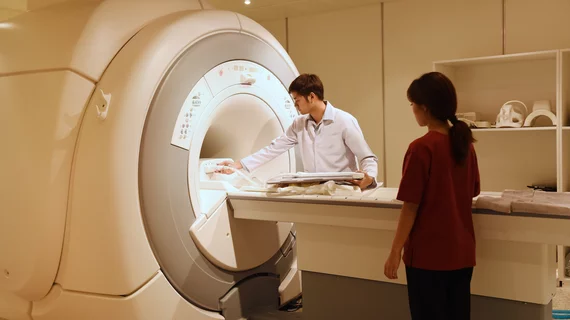Are MR arthrograms on their way out?
Once the go-to exams for gaining intra-articular details of major joints, MR arthrograms appear to be wavering in their popularity.
At one academic center in particular, MR arthrograms now account for just 4% of the institution's total MRI volume, which stakeholders say is a “drastic” decrease compared to the exam’s prevalence a decade ago.
Experts with New York-Presbyterian Hospital at Columbia University Medical Center recently took a deeper look at how MRI volume has changed at their institution over the last decade and found that although the number of MR exams saw a steep increase, the opposite occurred for arthrograms.
The details of this trend were shared on Feb. 8 in Current Problems in Diagnostic Radiology.
Corresponding author of the study Tony T. Wong, MD, and colleagues questioned whether the results of their work indicate the beginning of the end of MR arthrograms.
“Given that there are continual advances in conventional MR technology that allow for better imaging quality and the emergency of alternative cost-effective imaging modalities such as ultrasound, one natural question is whether or not the utilization of MR arthrography will decrease with passing time,” the group wrote.
At their institution, a total of 1,882 MR arthrograms of the shoulder, hip and elbow were completed between 2013 and 2020. In 2013, the exam’s percentage of total MR volume was in the double digits, but by 2020, it had decreased to just 4%. During that same time period, orthopedic referrals also dropped significantly, especially for hip and shoulder arthrograms.
The authors noted that the decrease has been gradual, but significant. They suggested that their findings could be the result of improvements in MR imaging that decrease or eliminate the need for arthrograms.
“Along with newer scanners have also come hardware advancements such as improved coil design. These factors have contributed to the ability to image with more efficiency, higher resolution, and faster scan times. Software has also contributed to improved imaging,” they explained.
They also suggested that the growing use of ultrasound—a more cost effective and accessible exam—could contribute to the trend, as ultrasound can be used in real time by orthopedists themselves to visualize a joint space.
Patients and providers could also play a role in the exam’s decreasing prevalence. MR arthrograms, although proven to be beneficial, are more invasive and more costly than conventional MRI scans. And although the procedure is safe, it does pose additional risks and could cause post-injection discomfort. For in-season athletes, this could delay their return-to-play, which is likely taken into serious consideration for them and their referring providers.
So, does all of this mean that the exam is on its way out?
That is still to be determined. The authors noted that a limitation of their study is that their data is based on their facility alone. They suggested that additional studies need to be conducted at other centers to establish whether this trend will continue and, if so, whether it is in the best interest of patients.
The study abstract is available here.

